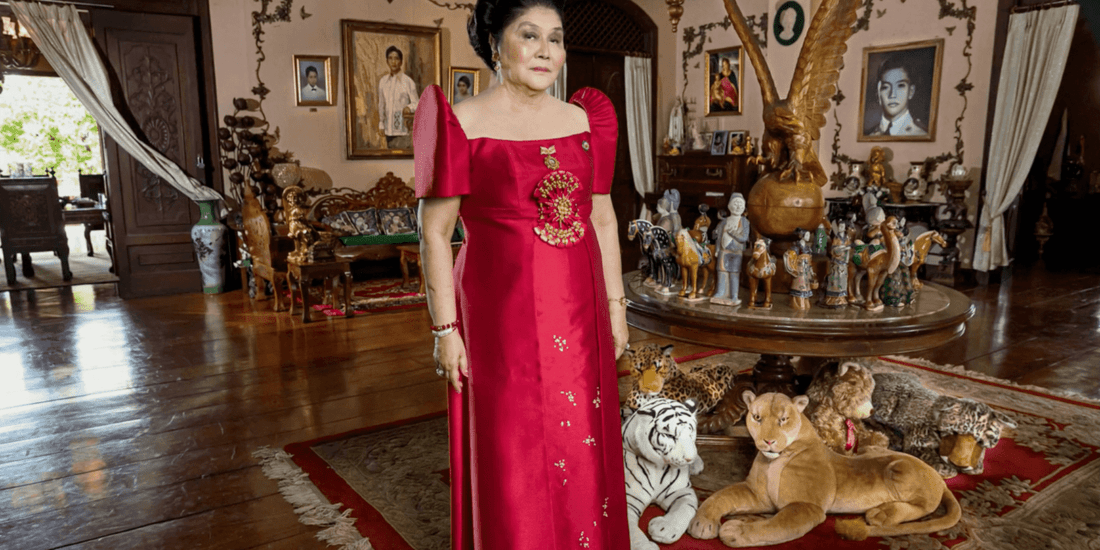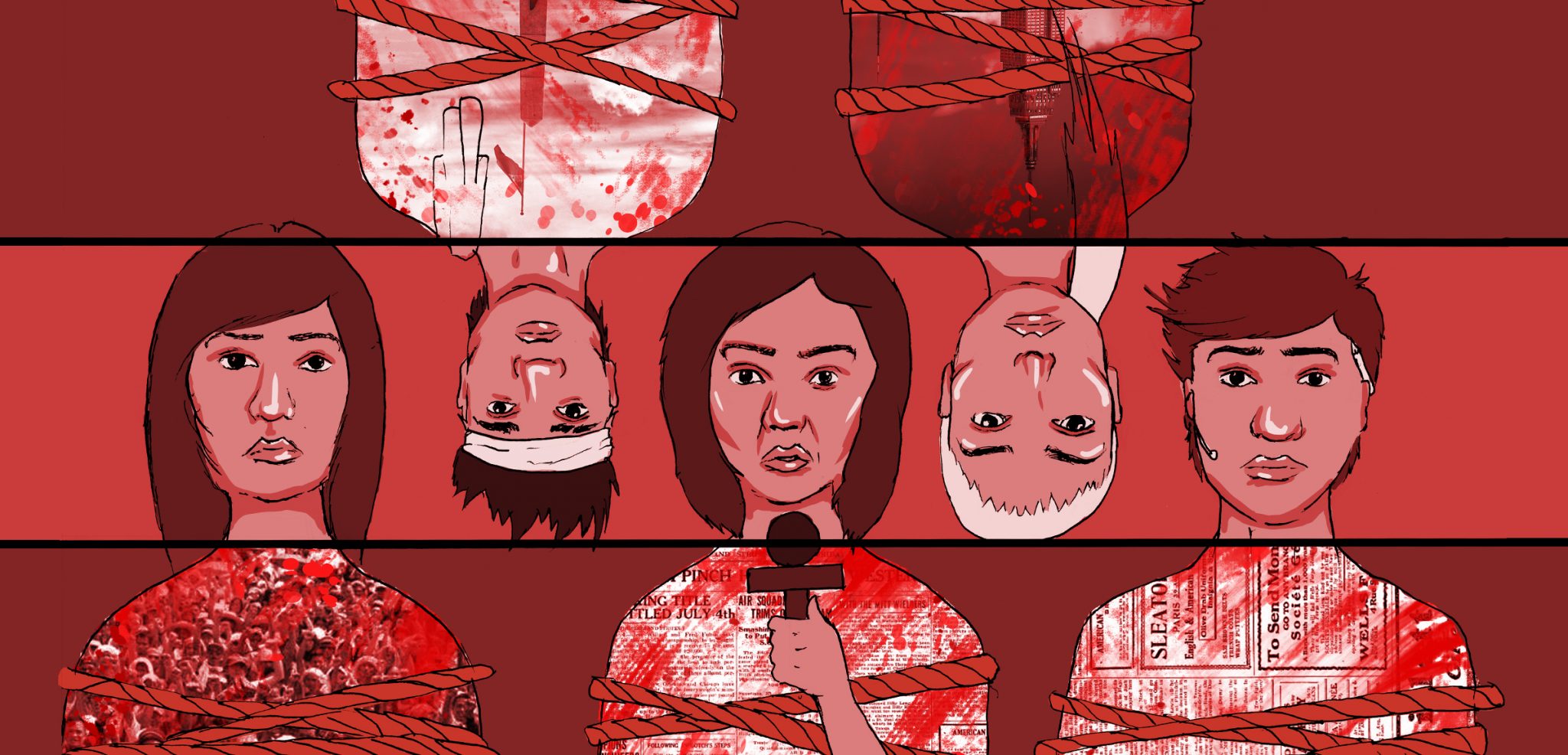Mindanao’s pursuit for peace, human rights in PH take center stage at DSPC’s UNLAD event ‘Kapayapaan x Katarungan’
“One death is still too many,” Marc Siapno from the Commission on Human Rights (CHR) said.
Opening the discourse on social issues for college and senior high school students to participate in, the Development Studies Program Council’s (DSPC) event, “Kapayapaan x Katarungan: A Forum about the Peace in Mindanao and the War on Drugs”, brought speakers from the Office of the Presidential Adviser on the Peace Process (OPAPP), the CHR, the Amnesty International, and the University of the Philippines College of Law to campus.
The speakers shared their insights and the state of the nation’s peace efforts and human rights with students on November 23 at Bulwagang Jose Basa for the final symposium for UNLAD, DSPC’s four-day series of events for Students’ Week 2017.

The quest for long, lasting peace in Mindanao
From the OPPAP, Pamela Ann Padilla-Salvan presented a four-point lecture on the status of Mindanao by providing the context necessary to understand the complicated issue, notably by addressing the unanswered questions and inquiries on the government’s peace efforts, Mindanao conflict, Bangsamoro peace process, and the Marawi crisis.
Noting the government’s comprehensive peace efforts through its six-paths-to-peace endeavor, as stated in Executive Order No. 3 (S. 2001) on Defining Policy and Administrative Structure for Government Comprehensive Peace Efforts, Salvan stressed the importance of “negative peace”, which refers to peace with the absence of violence.
Given the presence of extremist groups in Mindanao, Salvan also discussed the impact of the lack of peace to the costs of human development to Mindanao. Recognized by the government, much of the instability in the region can be attributed to “historical injustices committed against the Bangsamoro; minorization and landlessness; relative economic deprivation and underdevelopment; political and cultural marginalization; and [the need to satisfy] the just aspirations of the Bangsamoro people for self-determination while preserving and strengthening the territorial integrity of the republic of the Philippines.”
Acknowledging that Mindanao’s problems are also the nation’s problems, students were also educated on the Comprehensive Agreement of the Bangsamoro and the Bangsamoro Basic Law in order to fully understand the plight of the Bangsamoro people for self-determination, preservation of the Moro identity, and a life free of conflict and extremism.

“One death is still too many” – Marc Siapno, CHR
Shifting the conversation from instability in Mindanao to human rights in the Philippines, Marc Siapno from the CHR shed light on its mission to “guide the government and society towards actions that respect the rights of all.”
In light of the recent controversies revolving around CHR in the previous months, particularly the House of Representative’s move to allot on P1,000 to the organization, Siapno stressed the importance of understanding the role of CHR in the nation.
As a constitutional commission or office, CHR serves primarily to be the conscience of government and the people, seeking truth in human rights issues and living by the rule of thumb that “ones who have less in life should have more in law,” Siapno shared.
Explaining why CHR is state-focused, Siapno clarified that human rights are a state obligation, as according to the United Nations, human rights are inherent and necessary to preserve human dignity.
On the topic of the country’s war on drugs, “There is no space in this society to think that criminals are all sudden not due human rights,” Siapno underscored.
Moreover, Siapno explained CHR’s refusal to use the term “war” on drugs, instead using the term “campaign” on drugs. According to Siapno, the use of “war” implies the opposition’s aggression, giving dignity to the concept of “nanlaban.”

The youth’s role
The Youth Representative to the Board of Trustees of Amnesty International Philippines, Ray Andrew Villafuerte added the youth’s side of the equation, pointing out our generation’s abilities in promoting and protecting human rights in the country.
Clarifying the youth’s role in human rights, Villafuerte explained that while the state must respect our dignity, protect our rights, and fulfill its responsibility of respecting and promoting our rights, it is the people, including the youth, who must also play their part in the story of the nation by respecting, protecting, and promoting their human rights, as well as those around them.
Villafuerte also shared the cyclic process of human rights protection, explaining the process of how duty bearers (the government) must fulfill their obligation to rights holders (the people) who must in turn claim their rights from the duty bearers.
He also clarified the use of the terms “abuses” and “violations” in human rights discourse as human rights abuses are caused by private individuals while human rights violate are caused by the state.

Personalizing human rights
Closing the event with an interactive talk on how to keep the human rights conversation going, Chad Osorio of Jus x Machina and research associate at UP Law Center -Institute of International Legal Studies expressed the need to be creative in our efforts to spread the message of peace, such as the activities he incorporated with his talk.
Osorio began his talk by giving out small pieces of paper which were labeled with roles in society such as police officer, shabu user, and citizen. After calling the “police officers” up front, he then proceeded to ask them to find the shabu users in his rendition of the game “Bring Me.” Unbeknownst to the audience at first, the game was a metaphor for the extrajudicial killings quota system of the Philippine National Police to find shabu users regardless of accuracy in order to get the “kill rewards.”
In another game, Osorio tackled privilege and how it plays its part in both encouraging and discouraging action. Holding a paper back in the center of the room, Osorio asked the audience to aim their IDs into the bag. When the game was over and only one ID managed to make it inside the bag, Osorio explained how the game symbolized how feeling “far” from a goal discourages people from even trying to achieve their goals, under the belief that they don’t have a chance in the first place.
Relating this to the current social issues wreaking havoc in the country, Osorio emphasized how each person can leave an impact if people exercise creativity in their advocacies, reach out with relative and interactive methods, and understand the opposite side—all of which will come to fruition if people work together towards a collective goal for society.
***
In a rare moment for a student or program council in campus to take a stand on a social issue, the Development Studies Program Council concluded the event by reaffirming their stance in solidarity of the victims of Marawi and extrajudicial killings in the war on drugs.
In one of the days leading towards the end of Students’ Week 2017, “Kapayapaan x Katarungan: A Forum about the Peace in Mindanao and the War on Drugs” was a moment of enlightenment promoting critical thinking among DLSU-D students, giving both college and senior high school students insights on the struggles of the nation they’re set to encounter when they step outside the four walls of the classroom.





